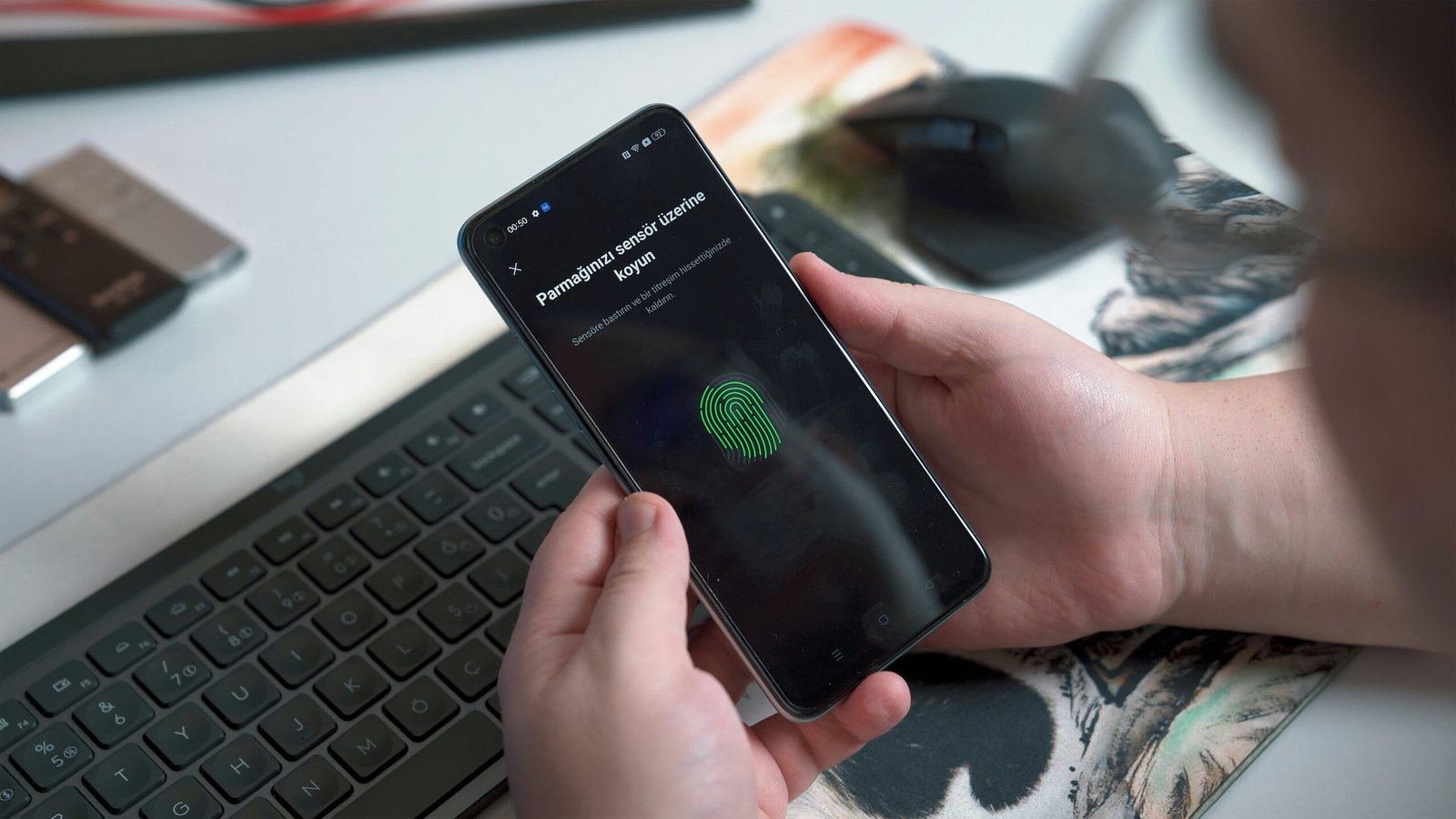
In the early days of biometric authentication, fingerprints were the primary focus. The unique patterns and ridges on our fingertips provided a reliable and secure way to identify individuals. This technology was initially used by law enforcement agencies to solve crimes and identify suspects. However, as technology advanced, the use of fingerprints expanded beyond criminal investigations.
With the introduction of smartphones, fingerprints became a convenient way to unlock devices and authorize payments. This marked a significant shift in the adoption of biometric authentication in everyday life. People were no longer limited to using passwords or PINs; instead, they could simply press their finger on the sensor and gain access to their devices.
But the evolution of biometric authentication did not stop there. As technology continued to advance, new methods of identification emerged. One such method is facial recognition. Instead of relying on fingerprints, facial recognition technology uses unique facial features to identify individuals. This technology has gained popularity in recent years and is now widely used in various industries.
Facial recognition has found its way into airports, where it is used to enhance security and streamline the boarding process. Passengers can now simply look into a camera, and their identity is verified within seconds. This not only saves time but also improves security by eliminating the need for physical boarding passes.
Another exciting development in the field of biometric authentication is voice recognition. Our voices are as unique as our fingerprints, and this technology leverages that fact to identify individuals. Voice recognition has found applications in call centers, where it is used to authenticate customers over the phone. By analyzing vocal patterns and characteristics, companies can ensure that only authorized individuals have access to sensitive information.
As we move forward, the evolution of biometric authentication shows no signs of slowing down. Researchers are exploring new methods such as iris recognition, gait analysis, and even brainwave patterns. These advancements promise to further enhance security and make our digital lives more convenient.
In conclusion, the evolution of biometric authentication has come a long way since the days of relying solely on fingerprints. From facial recognition to voice recognition, the possibilities are expanding, and our unique physical and behavioral traits are becoming the key to unlocking our devices and protecting our sensitive information.
As technology advanced, the methods of biometric authentication expanded beyond just fingerprints. While fingerprints remain a popular and widely used form of biometric identification, other biometric traits have gained recognition and adoption.
One such trait is facial recognition. With the proliferation of high-resolution cameras and powerful facial recognition algorithms, facial recognition has become a viable and widely adopted form of biometric authentication. It works by analyzing unique facial features, such as the distance between the eyes or the shape of the jawline, to create a digital representation of an individual’s face. This digital representation can then be compared to a database of known faces to authenticate the person’s identity.
Another emerging form of biometric authentication is iris recognition. The iris, the colored part of the eye, contains unique patterns that are as distinctive as fingerprints. By capturing an image of the iris, specialized algorithms can extract and analyze these patterns to create a digital template. This template can then be compared to a database of known iris templates to verify the person’s identity.
Voice recognition is yet another form of biometric authentication that has gained traction in recent years. By analyzing unique vocal characteristics, such as pitch, tone, and pronunciation, voice recognition technology can create a voiceprint for each individual. This voiceprint can then be compared to a database of known voiceprints to authenticate the person’s identity.
While fingerprints remain a popular and widely used form of biometric authentication, the rise of facial recognition, iris recognition, and voice recognition has expanded the possibilities for secure and convenient authentication methods. These advancements in biometric technology have not only improved security but have also enhanced the user experience by providing faster and more seamless authentication processes.
Despite the concerns surrounding facial recognition technology, its potential applications are vast and promising. In the field of law enforcement, facial recognition has proven to be a valuable tool in identifying and apprehending criminals. By comparing surveillance footage with a database of known individuals, law enforcement agencies can quickly identify suspects and prevent crimes.
Moreover, facial recognition technology has the potential to revolutionize the retail industry. Imagine walking into a store, and the cameras instantly recognize your face, allowing for a personalized shopping experience. The store could provide tailored recommendations based on your previous purchases or offer exclusive discounts to loyal customers. This level of customization could enhance the overall shopping experience and increase customer satisfaction.
Another area where facial recognition technology is making significant strides is in healthcare. With the ability to accurately identify patients, medical professionals can access their medical records quickly and efficiently. This can lead to improved patient care, as doctors can have instant access to critical information such as allergies, medical history, and medication records. Additionally, facial recognition can be used to monitor patients’ vital signs and detect early warning signs of health issues.
As with any emerging technology, there are ethical considerations that need to be addressed. One of the main concerns is the potential for bias in facial recognition algorithms. Studies have shown that these algorithms can be less accurate when identifying individuals from certain racial or ethnic backgrounds. This could lead to discriminatory practices if facial recognition is used in areas such as hiring or law enforcement.
Despite these challenges, facial recognition technology continues to evolve and improve. Researchers and developers are working tirelessly to enhance the accuracy and reliability of these systems while addressing the ethical concerns. As the technology becomes more sophisticated, it is crucial to strike a balance between convenience, security, and privacy to ensure its responsible and ethical use.
Beyond the Physical: Behavioral Biometrics
As technology continues to advance, biometric authentication is moving beyond just physical traits. The rise of behavioral biometrics has opened up a whole new realm of possibilities for authentication methods.
Behavioral biometrics focus on unique patterns in our behavior, such as the way we type, walk, or even the rhythm of our heartbeat. By analyzing these patterns, systems can create a unique profile for each individual, allowing for highly accurate and secure authentication.
One of the advantages of behavioral biometrics is that it can be done seamlessly in the background without requiring any additional effort from the user. Unlike fingerprint or facial recognition, which require specific actions, behavioral biometrics can passively authenticate users based on their natural behavior.
For example, keystroke dynamics is a type of behavioral biometric that analyzes the unique patterns in the way individuals type on a keyboard. It takes into account factors such as typing speed, rhythm, and even the pressure applied to the keys. By capturing and analyzing these patterns, a system can determine if the user typing matches the established profile, providing a secure and convenient method of authentication.
Similarly, gait recognition is another form of behavioral biometrics that focuses on analyzing the way individuals walk. Each person has a unique walking style, influenced by factors such as height, weight, and body structure. By using sensors or cameras to capture the movement of an individual, a system can create a gait profile that can be used for authentication purposes.
However, like any technology, behavioral biometrics also comes with its challenges. The accuracy of these systems can be affected by various factors, such as changes in behavior due to illness or stress. For example, if a person is feeling unwell, their typing speed or walking style may be different from their usual pattern, potentially leading to authentication failures.
Additionally, there are concerns about the collection and storage of behavioral data, as it raises questions about user privacy. As behavioral biometrics rely on continuously monitoring and analyzing an individual’s behavior, there is a need to ensure that this data is stored securely and used only for authentication purposes. Striking the right balance between convenience and privacy is crucial for the widespread adoption of behavioral biometrics.
In conclusion, behavioral biometrics offer a promising avenue for authentication methods beyond physical traits. By leveraging unique patterns in our behavior, these systems can provide highly accurate and secure authentication. However, it is important to address the challenges associated with accuracy and privacy to ensure the successful integration of behavioral biometrics into our daily lives.
One area where biometric authentication is expected to have a significant impact is healthcare. With the increasing use of electronic health records and telemedicine, ensuring the security and privacy of patient data is of utmost importance. Biometric authentication can provide a robust and reliable method for healthcare professionals to access patient records securely.
In the finance industry, biometric authentication has already gained traction with the use of fingerprint or facial recognition for mobile banking applications. However, as technology continues to advance, we can expect to see more sophisticated biometric authentication methods being adopted, such as iris or voice recognition.
Transportation is another sector that can greatly benefit from biometric authentication. Airports, for example, can use facial recognition technology to expedite the check-in and boarding processes, improving efficiency and enhancing security. Additionally, biometric authentication can be used in driver identification systems, ensuring that only authorized individuals have access to vehicles.
While the future of biometric authentication holds great promise, there are also challenges that need to be addressed. Privacy concerns and the potential for biometric data to be hacked or misused are valid concerns. It will be essential for organizations to implement robust security measures and adhere to strict privacy regulations to safeguard biometric data.
In conclusion, the future of biometric authentication is bright. With advancements in technology and increasing adoption across various industries, biometric authentication will continue to enhance security and convenience. As long as privacy concerns are adequately addressed, biometric authentication has the potential to revolutionize the way we authenticate and verify our identities.



